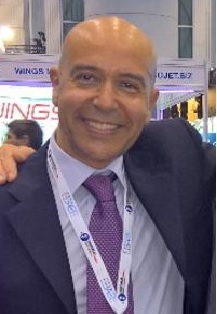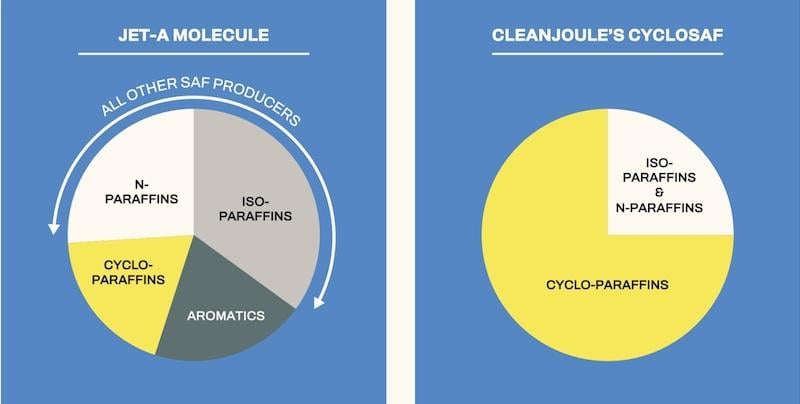CleanJoule Enters ASTM Approval Process For Potential 100% SAF
Details
More Products & Services
Products & Services
Aerospace | Aviation Week Network
Aviation Week Network
https://aviationweek.com/themes/custom/particle/dist/app-drupal/assets/awn-logo.svg
Home - Aviation Group Marketing
Aviation Week Network
120 data points on over 156,000 commercial and business aviation aircraft, including military transports. Discover the most trustworthy resource for the complete aircraft history, plus ad hoc reports, month-over-month trend analysis and details on expected deliveries through 2050.
People

Andrea Rossi Prudente
Aviation Week Network

Becca Balmes
Aviation Week Network

Belinda Tan
Aviation Week Network

Brian Everstine
Aviation Week Network
Editor

Eddie Krankowski
Aviation Week Network
Assistant Manager, Tradeshows

erving dockery
Aviation Week Network

Lisa Tan
Aviation Week Network
Senior Marketing Manager

Mark Thomas
Aviation Week Network
Description
A synthetic jet fuel that promises a pathway to 100% sustainable aviation fuel (SAF) use has formally entered the approval process for use in aircraft.
Developer CleanJoule is seeking initial approval of its CycloSAF fuel as a 10% blending component via standards developer ASTM International's Fast Track process.
Fossil Jet A/A-1 fuel is a mix of hydrocarbons comprising straight-chain n-paraffins, branched-chain iso-paraffins and two types of ring-chain molecules: cyclo-paraffins with single carbon bonds, and aromatics with double bonds. Most SAF is synthesized paraffinic kerosenes and limited to a maximum 50% blend with fossil jet fuel.
CycloSAF is exclusively comprised of cyclo-paraffinic hydrocarbons, also known as cycloalkanes, produced from biomass such as forestry residue and agricultural waste via a two-step process. The objective is to make a fuel that can produce a 100% SAF, blended or unblended.
The International Air Transport Association estimates that 100% SAF use would contribute 65% of the decarbonization required to meet the industry's net-zero 2050 goal. “So far, all the SAFs out there are limited to 50% blendability. With a 50% blend limit, you can never get to 65% decarbonization. The math doesn't work,” says CleanJoule founder and CEO Mukund Karanjikar.
“In order to get to 100% SAF adoption you need superior hydrocarbons as part of your blend that allow you to go above the minimum set of characteristics specified by ASTM,” he says. “With what we bring to the table, now you can envision a path to a 100% SAF that does not need to be blended with fossil-based Jet A/A-1 at all.”
So far, only eight feedstock-to-fuel pathways have received ASTM approval since 2009—five in blends up to 50%, two to 10% and one limited to 50% initially but with potential for 100%.
“The reason the 50% blend limit exists is because of density,” Karanjikar says. “All the renewable hydrocarbons currently produced by the primary pathways have a density of 0.75 g/cc. The minimum passing grade for jet fuel is 0.775, so unless you have something on the other side of 0.775 as your blending component, you can never get 0.775.”
With fossil Jet A that weighs 0.8 g/cc and SAF that weighs 0.75 g/cc, a 50:50 blend has a density of 0.775 g/cc. CleanJoule's process produces cycloalkanes that weigh 0.82-0.84 g/cc. “When you have that kind of density being mixed in with other SAFs that have a density of 0.75, now you can truly envision 100% SAF,” he says.
Another reason often given for limiting blends is the absence of the aromatic hydrocarbons in SAF that are present in fossil jet fuel and required for the correct functioning of seals in engines and fuel systems. “We have demonstrated that our cyclo-paraffins actually replace aromatics, even for the seal swell characteristic,” he says.
In addition to providing higher fuel density and the required seal swell, the single-bond ring structure of cyclo-paraffins replaces the hard-to-break double carbon bonds in aromatics that are responsible for much of the particulate matter in jet engine exhaust emissions.
CycloSAF is produced via a simple two-stage process. “The first one is biological, so it breaks down the waste biomass that comes into the reactor and produces an intermediate hydrocarbon, and that intermediate hydrocarbon then cyclizes into the final SAF product in a second reaction,” Karanjikar says.
“We are substantially simpler compared to any of the other processes. And our process inherently has extraordinary high atomic carbon efficiency,” he says, referring to the proportion of carbon in the feedstock that makes it into the fuel.
"Because our process is substantially simpler, and with extraordinarily higher carbon efficiency. Our process at scale will enable at-parity cost of manufacturing," he says.
Salt Lake City-based CleanJoule is currently operating a smaller-scale pilot plant, but plans a rapid scale-up. “Within two months, we'll be commissioning an industrial demonstration plant in Salt Lake City and, within two years after that, we will begin work on full-scale commercial manufacturing plant,” Karanjikar says.
The company is seeking initial approval for use in aircraft via ASTM's Fast Track process, which streamlines testing but limits the blend to 10%. “We want to make sure we take the de-risked approach of 10% blend approval. But the point of our existence is absolutely to get to that 100%,” he says.
CycloSAF also is 10 % more energy dense than other SAFs. “Cyclo-paraffinic structures come with two different things. One is the higher density, and the second is the rings have strain in them, which means if you open the ring it imparts higher energy,” he says.
“On a volumetric basis, CycloSAF contains 10% more megajoules for the same liter or gallon,” Karanjikar says. “Wouldn't you be happy to get 10% higher energy content from the same $3 that you just spent on a gallon of jet fuel? Because to get 10% higher of anything in aviation takes an eternity.“
The higher energy density could offset performance penalties resulting from government incentives or mandates to use SAF blends. “When the regulators ask you to blend with 50% SAF for one of two different reasons, carrots or sticks, the final tank on your plane is 0.775 [g/cc] when it could have been 0.8 if there was no decarbonization mandate.
“What they've actually done is asked you to fly on an inferior composition of hydrocarbons robbing you of 4% or so of your energy efficiency. That's not small in aviation,” Karanjikar says. “What we enable people to do is keep it well above 0.8, and you would still be able to fly on 100% SAF, so you are not paying an energy efficiency penalty for wanting to be green.”
CleanJoule's business model is to be a fuel producer. “You have to build, own and operate as your fundamental business model,” Karanjikar says. “Then, when you are looking to grow, you can have joint developments, partnerships, joint ventures, licensing arrangements with other people. But it evolves to that hybrid build, own, operate and license model much farther down the line.”
Developer CleanJoule is seeking initial approval of its CycloSAF fuel as a 10% blending component via standards developer ASTM International's Fast Track process.
Fossil Jet A/A-1 fuel is a mix of hydrocarbons comprising straight-chain n-paraffins, branched-chain iso-paraffins and two types of ring-chain molecules: cyclo-paraffins with single carbon bonds, and aromatics with double bonds. Most SAF is synthesized paraffinic kerosenes and limited to a maximum 50% blend with fossil jet fuel.
CycloSAF is exclusively comprised of cyclo-paraffinic hydrocarbons, also known as cycloalkanes, produced from biomass such as forestry residue and agricultural waste via a two-step process. The objective is to make a fuel that can produce a 100% SAF, blended or unblended.
The International Air Transport Association estimates that 100% SAF use would contribute 65% of the decarbonization required to meet the industry's net-zero 2050 goal. “So far, all the SAFs out there are limited to 50% blendability. With a 50% blend limit, you can never get to 65% decarbonization. The math doesn't work,” says CleanJoule founder and CEO Mukund Karanjikar.
“In order to get to 100% SAF adoption you need superior hydrocarbons as part of your blend that allow you to go above the minimum set of characteristics specified by ASTM,” he says. “With what we bring to the table, now you can envision a path to a 100% SAF that does not need to be blended with fossil-based Jet A/A-1 at all.”
So far, only eight feedstock-to-fuel pathways have received ASTM approval since 2009—five in blends up to 50%, two to 10% and one limited to 50% initially but with potential for 100%.
“The reason the 50% blend limit exists is because of density,” Karanjikar says. “All the renewable hydrocarbons currently produced by the primary pathways have a density of 0.75 g/cc. The minimum passing grade for jet fuel is 0.775, so unless you have something on the other side of 0.775 as your blending component, you can never get 0.775.”
With fossil Jet A that weighs 0.8 g/cc and SAF that weighs 0.75 g/cc, a 50:50 blend has a density of 0.775 g/cc. CleanJoule's process produces cycloalkanes that weigh 0.82-0.84 g/cc. “When you have that kind of density being mixed in with other SAFs that have a density of 0.75, now you can truly envision 100% SAF,” he says.
Another reason often given for limiting blends is the absence of the aromatic hydrocarbons in SAF that are present in fossil jet fuel and required for the correct functioning of seals in engines and fuel systems. “We have demonstrated that our cyclo-paraffins actually replace aromatics, even for the seal swell characteristic,” he says.
In addition to providing higher fuel density and the required seal swell, the single-bond ring structure of cyclo-paraffins replaces the hard-to-break double carbon bonds in aromatics that are responsible for much of the particulate matter in jet engine exhaust emissions.
CycloSAF is produced via a simple two-stage process. “The first one is biological, so it breaks down the waste biomass that comes into the reactor and produces an intermediate hydrocarbon, and that intermediate hydrocarbon then cyclizes into the final SAF product in a second reaction,” Karanjikar says.
“We are substantially simpler compared to any of the other processes. And our process inherently has extraordinary high atomic carbon efficiency,” he says, referring to the proportion of carbon in the feedstock that makes it into the fuel.
"Because our process is substantially simpler, and with extraordinarily higher carbon efficiency. Our process at scale will enable at-parity cost of manufacturing," he says.
Salt Lake City-based CleanJoule is currently operating a smaller-scale pilot plant, but plans a rapid scale-up. “Within two months, we'll be commissioning an industrial demonstration plant in Salt Lake City and, within two years after that, we will begin work on full-scale commercial manufacturing plant,” Karanjikar says.
The company is seeking initial approval for use in aircraft via ASTM's Fast Track process, which streamlines testing but limits the blend to 10%. “We want to make sure we take the de-risked approach of 10% blend approval. But the point of our existence is absolutely to get to that 100%,” he says.
CycloSAF also is 10 % more energy dense than other SAFs. “Cyclo-paraffinic structures come with two different things. One is the higher density, and the second is the rings have strain in them, which means if you open the ring it imparts higher energy,” he says.
“On a volumetric basis, CycloSAF contains 10% more megajoules for the same liter or gallon,” Karanjikar says. “Wouldn't you be happy to get 10% higher energy content from the same $3 that you just spent on a gallon of jet fuel? Because to get 10% higher of anything in aviation takes an eternity.“
The higher energy density could offset performance penalties resulting from government incentives or mandates to use SAF blends. “When the regulators ask you to blend with 50% SAF for one of two different reasons, carrots or sticks, the final tank on your plane is 0.775 [g/cc] when it could have been 0.8 if there was no decarbonization mandate.
“What they've actually done is asked you to fly on an inferior composition of hydrocarbons robbing you of 4% or so of your energy efficiency. That's not small in aviation,” Karanjikar says. “What we enable people to do is keep it well above 0.8, and you would still be able to fly on 100% SAF, so you are not paying an energy efficiency penalty for wanting to be green.”
CleanJoule's business model is to be a fuel producer. “You have to build, own and operate as your fundamental business model,” Karanjikar says. “Then, when you are looking to grow, you can have joint developments, partnerships, joint ventures, licensing arrangements with other people. But it evolves to that hybrid build, own, operate and license model much farther down the line.”

Share
Recent Chats
Share via email
Future: handle WhatsApp here
Future: handle LinkedIn here
Future: handle Twitter here
SUBMENU HERE
Share via Chat
Copy Link

 Digital Directory
Digital Directory